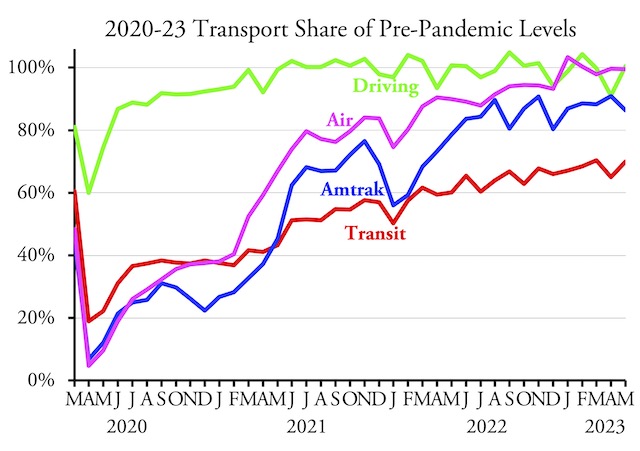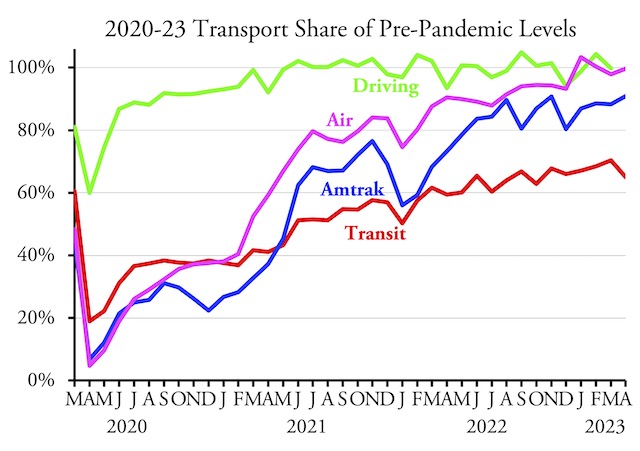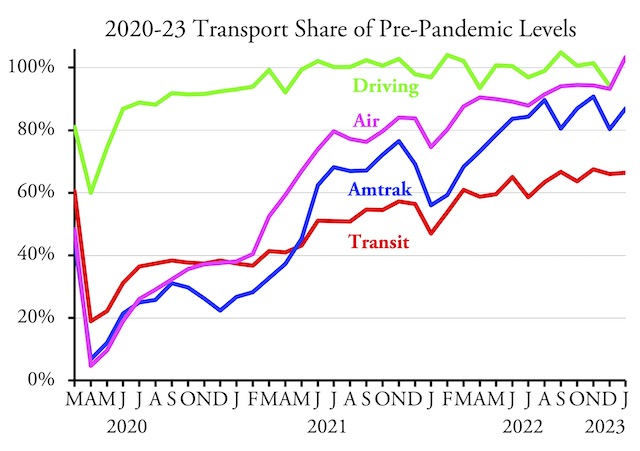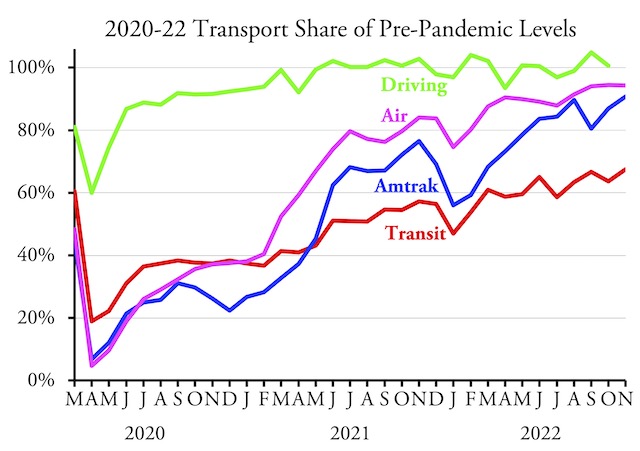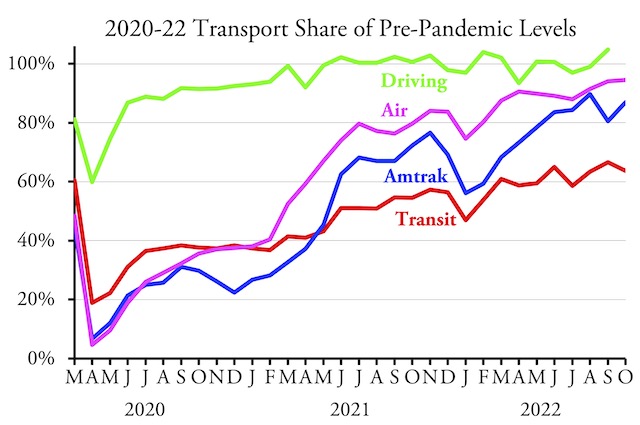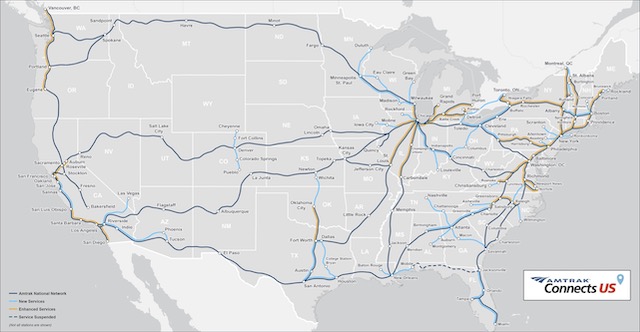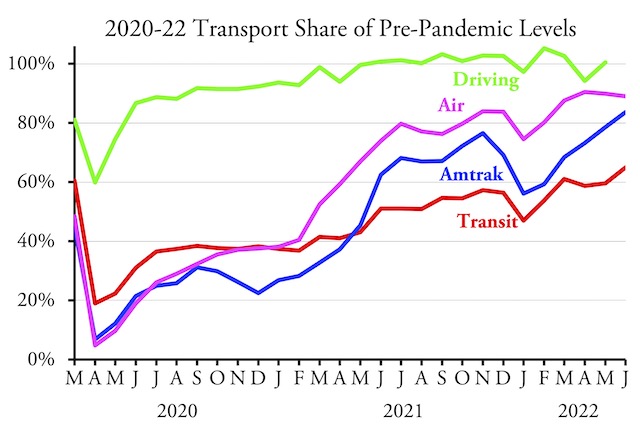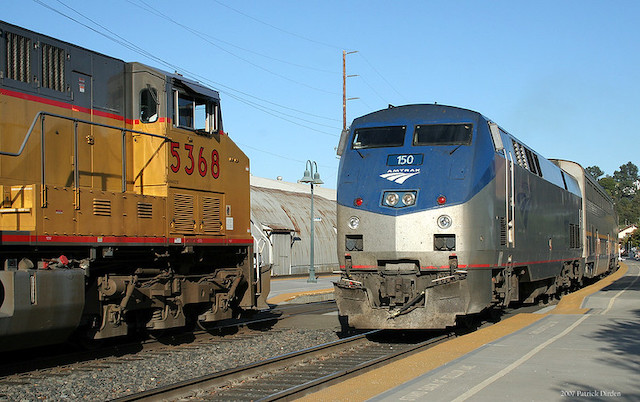Amtrak carried 492 million passenger-miles in May 2023, which was just 86.4 percent of the 569 million passenger-miles it carried in the same month of 2019, according to Amtrak’s latest monthly performance report. Considering that Amtrak’s April passenger-miles were nearly 91 percent as many in 2023 as 2019, this is a disappointing result. Since Amtrak ridership usually usually picks up in May due to increased vacationers, this suggests that Americans aren’t enthusiastic about riding trains for discretionary travel in a post-COVID world.
For detailed comments on transit and highways, see my July 12 post.
All three types of Amtrak trains underperformed in May, with Northeast Corridor trains carrying less than 88 percent of pre-pandemic riders, long-distance trains carrying 85 percent, and state-supported day trains carrying less than 81 percent. It is worth noting that Amtrak is putting most of the money it received for expansion in the infrastructure bill into state-supported trains even though they are the worst-performing part of its network. Amtrak’s reasoning is that Congress gave it money for capital improvements but not operating costs, so it will need to persuade the states to pay for operating costs of any new routes or increased frequencies. Continue reading

